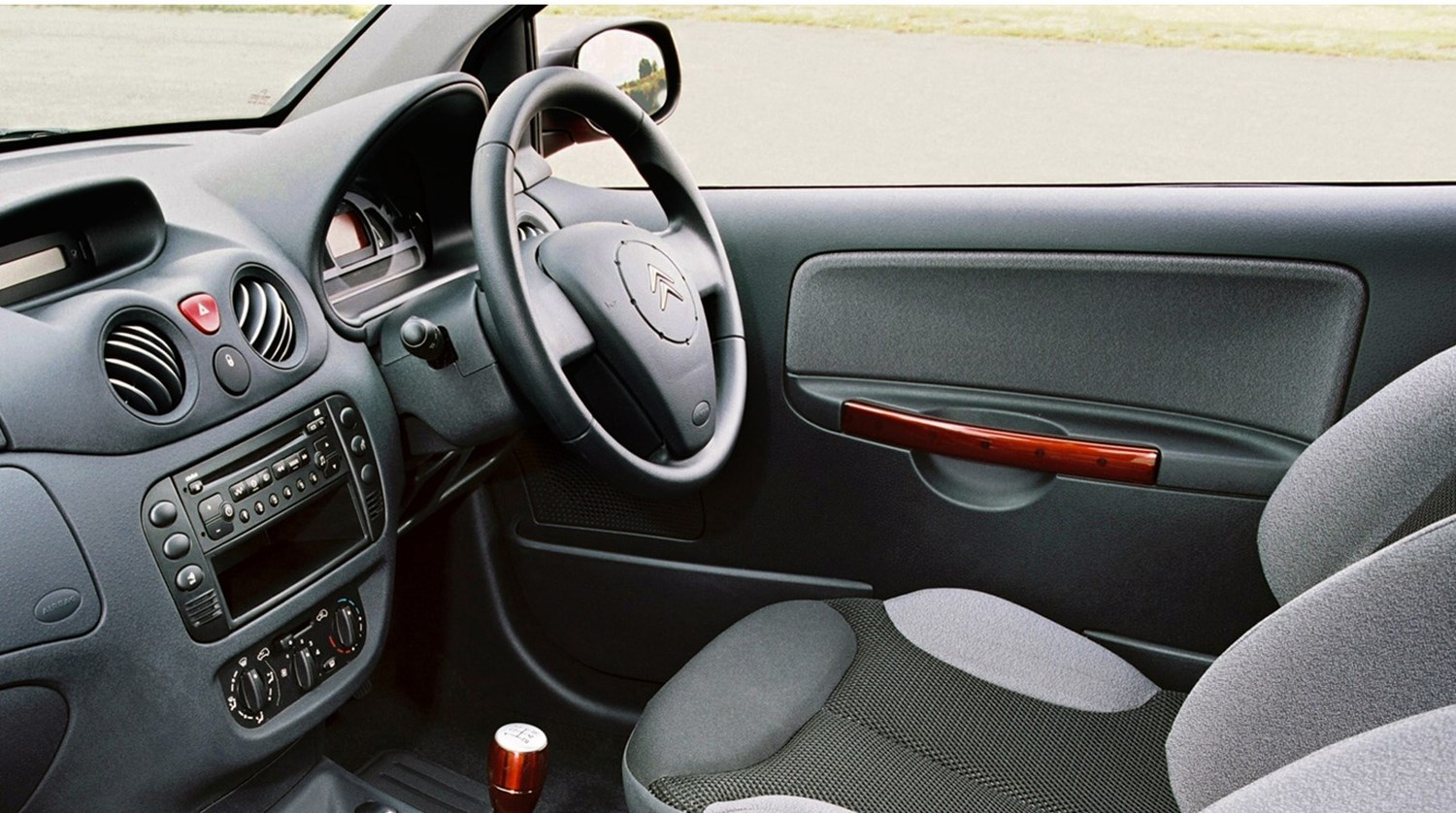Latest model
There was only one generation of C2, with a mild facelift four years into its life.
It was introduced in 2003, a year after the five-door C3 had replaced the Saxo range, to a mixed reception. The softly-styled C3 certainly captured the essence of a French hatchback, but the sportiness and joie de vivre had been lost. The C2, as a three-door model on the same platform, arrived to bring it back. The two cars shared a lot of technology, including engines, which you could also find across the Peugeot-Citroen divide in the Peugeot 206. These included 1.1, 1.4 and 1.6-litre petrols and 1.4 and 1.6-litre diesels.
The much more angular styling, notably the different height glass either side of the B-pillar, gave the C2 a much more sporting look, shared by its larger sibling the C4 – in fact there's a great deal about the current DS3 that isn't too far removed from the C2. In a further nod to the Saxo heritage, the C2 had some very familiar trim levels, including LX, Furio, VTR and VTS. There were also limited edition models such as the GT and the Loeb, named for Citroen's world rally champion Sebastien Loeb.
Although a three-door version of a supermini, the C2's much smaller stature and three-door nature put it in a different sector. Rather than fighting with the Ford Fiesta like the C3, the C2 rivalled the Ford Ka.
The C3 took on Volkswagen's Polo, the C2 challenged the Lupo. Other rivals included the second generation Renault Twingo and the Toyota Yaris. However, probably the most serious rival of all was the recently introduced Mini hatchback.
Value for money
It's difficult to fault the C2 as a value proposition even when new. The entry level car back in 2003 was the 1.1i L, at £8,395. Although prices rose to just over £14,000 for the diesel VTS car, you'd be hard-pressed to even get a Mini at the same budget.
It wasn't exactly the height of opulence at that price though. Although metallic paint was an option, very little else was and the car came equipped with barely anything – even the bumpers and door handles were left as plain, unpainted black plastic.
By the end of its life Citroen had resolved the trims down to just three, which broadly corresponded with engine choices, and gentrified the car somewhat. The base model was now the 1.1i VT and this had electric windows and a CD player, for £9,845. The top of the range VTS had alloy wheels, air conditioning and electric door mirrors, and still came in under £14,000.
Day-to-day costs were pretty good too. The petrol VTS was the costliest, at 40.9mpg combined and 163g/km CO2, equating to £175 a year in road tax, but the diesel returned nearly 66mpg on paper. The entry level cars rated at group 1 insurance, the lowest possible, but as the groupings have now been reclassified they sit in group 3. Even the VTS was only in group 15.
Looks and image
The C2 was an attempt to recapture the sportier image of the Saxo and older AX GT, by comparison to the softer, five-door C3. It worked well, with some unusual styling hints like the different height glass either side of the B-pillar, and you can certainly see how the more modern DS3 model that replaced it is an evolution of the design.
At the time the C2 came out and over the course of its life, Citroen was on a sporting high. It was in the middle of a rich vein of form in the World Rally Championship, which saw the manufacturer win three successive titles and driver Sebastien Loeb on a run that would take him to nine back-to-back titles.
It certainly helped the C2's more dynamic image, and Loeb's name was even applied to a special edition car early in its life.


